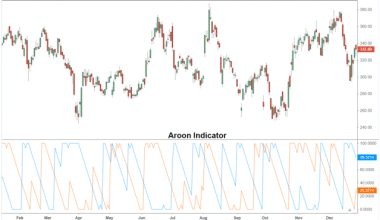When it comes to investing, the concept that you need a lot of money to get started is fiction. If you know where to look, some of today’s cheapest stocks could provide outstanding long-term gains. What excites investors about these stocks is not just their pricing, but also their latent potential, which frequently goes unnoticed by the public. I went into the data, analyzing market movements and speaking with investors, so this list of equities isn’t just a random selection. These are the ten cheapest stocks to buy now that could see strong growth in the future years.
What Makes a Cheap Stock?
Before we begin, let’s define what makes a stock “cheap.” We are not only discussing the share price. Instead, we’re looking at cheap equities, or companies that the market has yet to properly appreciate. Although its stock price has occasionally fallen owing to transitory setbacks, the company’s long-term prospects remain robust. These are the opportunities in which patient investors can profit greatly.
The 10 Cheapest Stocks to Buy in 2024.
Here are the ten cheapest stocks to buy in 2024 with a strong potential for growth:
- Ford Motor Company (NYSE: F)
- Sirius XM Holdings (NASDAQ: SIRI)
- Palantir Technologies (NYSE: PLTR)
- Aphria (NASDAQ: APHA)
- Inovio Pharmaceuticals (NASDAQ: INO)
- GoPro (NASDAQ: GPRO)
- BlackBerry (NYSE: BB) 8
- Energy Transfer (NYSE: ET)
- Zynga (NASDAQ: ZNGA)
- Viatri
#1. Ford Motor Company (NYSE: F)
Ford’s share price in the low teens seems cheap, given its drive into the electric vehicle (EV) sector. The introduction of the F-150 Lightning has piqued consumer curiosity, and Ford’s commitment to the EV industry makes it a possible growth story. It’s an excellent investment for long-term investors seeking for value in a dynamic industry.
#2. Sirius XM Holdings (NASDAQ: SIRI)
Sirius XM’s current stock price of $5 may appear modest, yet the corporation has over 34 million subscribers. Its development into podcasting creates new revenue potential, and its subscription-based model provides steady cash flow, giving it a dependable choice for dividend investors seeking stability in a low-cost stock.
#3. Palantir Technologies (NYSE:PLTR)
Palantir provides a one-of-a-kind opportunity in the AI and data analytics sectors for less than $10. It has a huge number of contracts with government agencies and large corporations, which helps to provide revenue stability. Palantir’s growth potential is enormous, given the increasing need for AI.
#4. Aphria (NASDAQ: APHA)
Aphria is a prominent cannabis stock that trades for less than $10. Following its merger with Tilray, it became the largest cannabis firm in terms of revenue. It is well-positioned for future growth as the cannabis industry matures, with a diverse portfolio in both the medical and recreational markets.
#5. Inovio Pharmaceuticals (NASDAQ: INO)
Inovio is one of the most promising biotech companies focused on DNA-based medicines, with a stock price of less than $10. Despite recent hurdles in the development of its COVID-19 vaccine, its work on infectious disease vaccines and cancer treatments has long-term potential.
#6. GoPro (NASDAQ: GPRO)
GoPro, which sells for less than $10, has managed to reinvigorate its company by focusing on a subscription model and cloud storage capabilities. Its user base remains devoted, particularly in the action sports scene, and its move into live streaming may lead to more growth.
#7. BlackBerry (NYSE: BB)
BlackBerry, known for its move from handsets to cybersecurity, is currently trading at less than $10. The company has established itself as a market leader in secure communications for governments and businesses, and its involvement in the Internet of Things (IoT) provides long-term growth potential in a world with increasing digital security requirements.
#8. Energy Transfer (NYSE: ET)
Energy Transfer is an undervalued energy stock, trading for less than $15 per share. It has a high dividend yield, making it appealing to income investors, and it is well-positioned for the global shift to natural gas, which is still important during the energy transition.
#9. Zynga (NASDAQ: ZNGA)
Zynga, which is currently listed just below $10, has remade itself through mobile games and in-app advertising. The company is capitalizing on the growing popularity of mobile gaming, and its focus on expanding ad revenue makes it a stock to watch in the digital entertainment market.
#10. Viatris Inc. (NASDAQ: VTRS)
Viatris is a pharmaceutical firm that trades for less than $10 and has a promising pipeline of generic and specialty medications. It is a market leader in providing inexpensive healthcare solutions, and it continues to make smart acquisitions to broaden its product offerings globally.
Stock Performance Tracker Template
The correct tools can help professionals manage their portfolios more successfully. I’ve built a Stock Performance Tracker Template so you can quickly track stock prices, P/E ratios, and other metrics across several companies. This will help you remain on top of market trends and ensure that you buy in low-cost stocks with high growth potential.
Here’s the Stock Performance Tracker template that you can copy and paste into Google Docs or Sheets:
| Date | Stock Ticker | Opening Price | Closing Price | High Price | Low Price | Volume | Daily Change (%) | Comments |
|---|---|---|---|---|---|---|---|---|
You can now copy this table directly into your Google Sheets or Docs and start using it to track stock performance.
Key Considerations When Choosing Cheap Stocks
When it comes to investing in inexpensive stocks, pricing should not be the only factor you consider. Consider the following.
- Has the company demonstrated a track record of expanding sales? Look for a robust and continuous upward trend.
- High debt might hinder a company’s potential to thrive, particularly during economic downturns.
- Is the industry expanding? AI, green energy, and healthcare stocks have high growth potential in the US.
- Companies with bad management tend to underperform, even if their market potential is large.
- Stocks such as Energy Transfer pay out regular dividends, providing income even if the stock price does not improve immediately.
Are inexpensive stocks worth the risk?
Cheap stocks are frequently more volatile, but can also provide substantial profits. By conducting thorough research, you can reduce risks and identify undervalued stocks with long-term development potential.
Can You Lose Money Investing in Cheap Stocks?
Yes, but the key is diversification. Don’t invest all your money in one stock. Spread it across industries and growth stages to reduce risk.
How do you find cheap stocks with growth potential?
Look for good fundamentals such as revenue growth and a healthy balance sheet. Stocks that are now undervalued but have long-term potential are your best chance.
Are cheaper stocks riskier than more expensive stocks?
Cheap stocks can be riskier, especially if they are from small-cap companies with unpredictable performance or unknown financials. Cheap stocks, on the other hand, can yield substantial returns if you invest in companies with great fundamentals, growth prospects, and market positioning. To manage risk, each stock must be properly evaluated.
Should I diversify my portfolio while purchasing inexpensive stocks?
Absolutely. Diversification is essential for limiting risk while investing in lower-cost equities, particularly if these stocks are from smaller or more volatile companies. Diversifying your investments across sectors, industries, and company sizes can help shield your portfolio from market changes and individual stock volatility.
Are there any sectors where cheap stocks outperform?
Some industries, such as technology, healthcare, and energy, frequently have lower-cost stocks with high growth potential. Emerging markets, biotech firms, and renewable energy companies can occasionally offer low-cost equities with long-term potential. The idea is to discover companies in these industries with good fundamentals and growth potential.
How do I discover undervalued stocks?
Finding inexpensive companies entails examining important financial measures like the price-to-earnings (P/E), price-to-book (P/B), and price-to-sales (P/S) ratios. Stock screeners, financial news sites, and analyst reports can all assist you uncover stocks that are undervalued. It’s also critical to evaluate industry trends, prospective product launches, and managerial efficiency.
What are penny stocks, and should you invest in them?
Penny stocks are shares of companies that trade for a relatively cheap price, usually less than $5. These stocks can be extremely speculative and dangerous due to their volatility and scarcity of liquidity. While some penny stocks have enormous growth potential, others are highly speculative and can result in large losses. If you’re thinking about buying penny stocks, you should conduct extensive research and grasp the company’s fundamentals.
Which is better: buying cheap or pricey stocks?
Depending on their value, both inexpensive and expensive stocks might be good investment opportunities. Expensive stocks such as Amazon or Apple may be overpriced, but they provide stability and growth. Cheaper stocks, on the other hand, offer a lower entry point with the potential for significant profits. The decision should be based on your investing objectives, risk tolerance, and the stock’s potential, rather than just its price.
Do dividends affect the value of a cheap stock?
Yes, dividends can make cheap stocks more appealing by offering steady returns even when the stock’s price does not grow dramatically. Stocks with a low share price and a high dividend yield can provide a consistent income stream, making them an attractive investment. However, be wary of companies with unsustainable high yields, as they may reduce dividends if the firm experiences financial difficulties.
How Long Should I Hold Cheap Stocks?
Your investment strategy and the stock’s potential determine the length of time you should hold cheap stocks. Some low-cost stocks may provide quick profits if their market value rises swiftly, while others may take a longer time horizon to reach their full potential. In general, it is best to invest in inexpensive companies over the long term to allow for growth.
What are the risks of investing in inexpensive stocks?
The key hazards of investing in cheap stocks include excessive volatility, a lack of liquidity, and poor corporate performance. These stocks frequently belong to little companies that may struggle to scale or compete with larger, more established firms. Furthermore, without strong fundamentals, these stocks may be susceptible to market downturns.
How does market sentiment influence cheap stocks?
Market mood has a significant impact on the success of cheap stocks. Positive news, such as higher-than-expected earnings or industry growth, might cause a stock price increase. Conversely, unfavorable news, even if unconnected to the company, can cause prices to fall. Cheap equities respond more strongly to market sentiment than large-cap companies, making them more volatile.
Can I lose all my money if I buy in cheap stocks?
While you are unlikely to lose all of your money until a firm goes bankrupt, cheap stocks are more susceptible to substantial price movements. Diversify your assets and avoid putting all of your money into one stock. Conducting due diligence on each organization is critical to reducing the probability of big losses.
Are overseas cheap stocks a worthwhile investment?
Yes, international markets frequently provide access to low-cost equities that help diversify your portfolio. Many emerging markets, for example, provide lower-cost stocks in industries such as technology, energy, and telecommunication. However, international equities can be more risky due to currency fluctuations, political instability, and varying laws.
What is the distinction between cheap and undervalued stocks?
While cheap stocks have a low price, undervalued stocks trade below their true value. A stock can be inexpensive owing to poor performance, but it can also be undervalued, creating a growth potential if the market catches up to its true worth. It’s critical to determine why a stock is inexpensive, whether it’s undervalued or merely a dangerous investment.
What measures should I use when evaluating cheap stocks?
Key metrics for evaluating inexpensive stocks are:
- Price-to-Earnings (P/E) Ratio: A lower P/E ratio could suggest undervaluation.
- Price-to-Book (P/B) Ratio: A low P/B ratio indicates that the stock is priced below its book value.
- Debt-to-Equity Ratio: A useful tool for determining a company’s financial soundness.
- Dividend Yield: If you’re looking for income, dividend-paying companies can help.
- Earnings Per Share (EPS): This metric provides insight into a company’s profitability.
Key Takeaways
- Ford Motor Company is inexpensive and has tremendous potential in the EV market.
- Palantir Technologies is a data and artificial intelligence business with rich government contracts and promising development potential.
- Energy Transfer is an undervalued energy stock with a high dividend yield.
- Aphria is a popular choice for investors wishing to enter the cannabis industry, which is expanding globally.
- Zynga has established itself as a leader in the mobile gaming market, making it an attractive option.
Conclusion
The cheapest stocks to buy aren’t only about finding a low price; they’re also about identifying value that others may have ignored. By carefully studying a company’s fundamentals, industry potential, and growth strategy, you can identify undervalued opportunities with the potential for big long-term returns. Are you ready to research these stocks and find your next big investment?
- HOW TO INVEST IN CASH APP STOCKS: Guide to Buy & Sell
- What Is Nasdaq: What It Is, History & How It Works
- Ways to Find Opportunities in the Stock Market at Any Time






